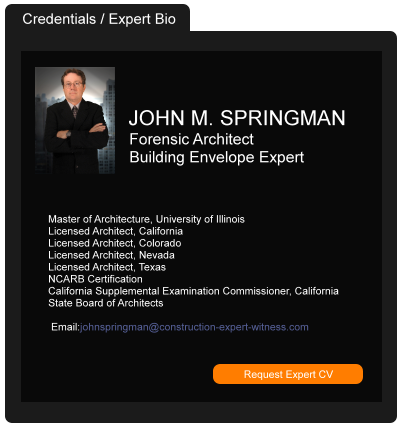Update: Lawyers Can Be Bound to Confidentiality Provision in Settlement Agreement
January 13, 2020 —
Danielle Ward, Esq. - Balestreri Potocki & HolmesIn July 2019, the California Supreme Court ruled that an attorney’s signature under the often-used phrase “approved as to form and content” does not preclude a finding that the attorney could be bound to the terms of a settlement agreement. (Monster Energy Co. v. Schechter (2019) 7 Cal.5th 781.) This decision marks a reversal of the Fourth District Court of Appeal’s 2018 ruling that approval of a contract is not tantamount to an agreement to be bound by that contract.
The underlying action stemmed out of a wrongful death suit by Wendy Crossland and Richard Fournier, parents of the decedent, against Monster Energy Company. The parties negotiated a settlement, a critical of element of which was a confidentiality provision aimed at keeping the the settlement secret.
The confidentiality provision prohibited plaintiffs and their counsel of record from disclosing both the existence of the settlement, or the terms thereof, to any person, entity, or publication, including the legal website Lawyers & Settlements. The attorneys signed the agreement under the phrase “approved as to form and content.”
Shortly after the settlement agreement was executed, the Plaintiffs’ attorney Bruce Schechter disclosed his clients’ settlement with Monster in an interview with Lawyers & Settlements. Monster filed suit against Mr. Schechter for breach of contract, among other causes of action. Mr. Schechter challenged the lawsuit with a SLAPP motion, essentially arguing that the lawsuit was meritless and merely an attempt to thwart freedom of speech.
The trial court denied Mr. Schechter’s motion as to the breach of contract cause of action finding that the settlement clearly contemplated that the attorneys were subjected to the terms of the agreement, and Schechter’s claim that he was not a party because he merely approved as to form and content was “beyond reason.”
The Fourth District Court of Appeal reversed, concluding that Mr. Schechter was not a party to the agreement by virtue of his signature approving the form and content, and the Plaintiffs had no authority to bind their attorney to the terms of the agreement. The Court of Appeal found that by affixing his signature to the agreement Mr. Schechter was merely manifesting his “professional thumbs up” in line with legal industry’s customary understanding.
In its reversal, the California Supreme Court did not disturb the legal community’s understanding of the phrase “approved as to form and content.” Rather, the Court concluded that an attorney’s signature under that often-used phrase does not preclude as a matter of law that the attorney intended to be bound by the agreement. The entire agreement, including the substantive provisions, need to be examined to determine the attorney’s intent in affixing his/her signature to the agreement.
Turning to the Crossland/Fournier Monster settlement agreement, the Court was unpersuaded by Mr. Schechter’s argument that he was not bound to the agreement because counsel was not included in the definition of “party”. The Court stated that it’s the substance of the agreement that determines whether counsel is a party to the contract, as opposed to a party to the lawsuit.
The Court was persuaded, in part, by the important role that confidentiality plays in brokering settlements. It noted that public disclosure of private settlements would serve to “chill” parties’ ability to resolve matters short of trial, and there was little doubt that confidentiality was an important term of the Crossland/Fournier Monster settlement. In concluding that Monster had met its burden to defeat an anti-SLAPP motion, the Court pointed to the numerous references to counsel in the substantive provisions of the agreement which a trier of fact could conclude bound Mr. Schechter to the confidentiality terms.
Danielle Ward has concentrated her law practice on defending developer, general contractor, and subcontractor clients in a variety of construction matters. She has been an attorney with Balestreri Potocki & Holmes since 2010 and can be reached at dward@bph-law.com.
Read the court decisionRead the full story...Reprinted courtesy of
Second Circuit Upholds Constitutionality of NY’s Zero Emissions Credit Program
November 21, 2018 —
Anthony B. Cavender - Gravel2GavelOn September 27, the U.S. Court of Appeals for the Second Circuit affirmed the District Court’s ruling that the “Zero Emissions Credit” (ZEC) program of the New York Public Service Commission is not unconstitutional. The case is Coalition for Competitive Electricity, et al. v. Zibelman, Chair of the New York Public Service Commission, et al.
In effect, the ZEC program provides subsidies to qualifying New York nuclear power plants as a way to reduce greenhouse gas emissions. The ZEC program is intended to prevent nuclear plants from being prematurely retired from generating power until suitable replacement facilities are operating.
Read the court decisionRead the full story...Reprinted courtesy of
Anthony B. Cavender, PillsburyMr. Cavender may be contacted at
anthony.cavender@pillsburylaw.com
Court Addresses HOA Attempt to Restrict Short Term Rentals
December 11, 2018 —
Kevin J. Parker - Snell & Wilmer Real Estate Litigation BlogIn a recent case, the Texas Supreme Court addressed an attempt by a homeowners’ association (“HOA”) to restrict short-term rentals based upon recorded Covenants, Conditions, and Restrictions (“CC&Rs”) applicable to a residential subdivision. The property was a single-family home. The homeowner rented the home through websites such as VRBO. The HOA issued notices of violation; the homeowner kept renting; the HOA assessed fines against the property. The property owner then sought a declaration from the court that the CC&Rs did not impose a minimum duration on occupancy or leasing. The trial court agreed with the HOA. The Texas Court of Appeals also agreed with the HOA. The Texas Supreme Court reversed, holding that the CC&Rs, as properly interpreted, did not prohibit short-term rentals. In arriving at its holding, the Texas Supreme Court analyzed the CC&Rs in detail and came to an interpretation different than the trial court and the Court of Appeals.
Read the court decisionRead the full story...Reprinted courtesy of
Kevin J. Parker, Snell & WilmerMr. Parker may be contacted at
kparker@swlaw.com
Why Ethiopia’s $5 Billion Dam Has Riled Its Neighbors
September 12, 2022 —
Samuel Gebre & Fasika Tadesse - BloombergEthiopia has been at loggerheads with downstream neighbors Egypt and Sudan for years over a $5 billion mega-dam it’s building on the Nile River. A third phase of filling a 74 billion cubic-meter (2.6 trillion cubic-foot) reservoir behind the Grand Ethiopian Renaissance Dam was completed in August, a process that’s reignited tensions. Egypt has described the unilateral action as a violation of international law and its foreign minister, Sameh Shoukry, wrote to the United Nations Security Council in July, reiterating its objections and accusing Ethiopia of derailing attempts to resolve the standoff.
1. Why is the dam so significant?
The Nile is the most important source of fresh water in a largely arid region that is very vulnerable to drought and climate change and is experiencing rapid population growth. Egypt relies on the 4,000-mile-long river for as much as 97% of its supply, and much of eastern Sudan’s population depends on it for survival. Ethiopia is counting on a 5,150-megawatt hydropower plant on its new dam to help supply electricity to the 60% of its population that don’t have access, and sustain its manufacturing industries. The plant began generating power in 2022, some of which will be sold to neighboring countries.
Reprinted courtesy of
Samuel Gebre, Bloomberg and
Fasika Tadesse, Bloomberg Read the court decisionRead the full story...Reprinted courtesy of
At $350 Million, Beverly Hillbillies Mansion Is Most Expensive in U.S.
August 10, 2017 —
Matt Gross - BloombergThe story of Jed Clampett is, by now, a legend. A poor mountaineer, he could barely feed his family of four, but one day, while he was out hunting for food, he fired his rifle into the swamp behind his shack—and struck oil. The sale of the resource-rich land, in 1962, would eventually net him between $25 million and $100 million, and he did what anyone with sudden riches would do: He packed up his truck and moved his clan to Beverly Hills, where their adventures would be the subject of nine seasons of the Beverly Hillbillies.
Now the Bel Air estate featured in the (fictional) show’s opening credits is up for sale—and as befits a wealthy, cultured oilman like Jed Clampett, it’s the most expensive listing in the country at $350 million.
“Chartwell”—10.3 acres of land centering on a 25,000-square-foot mansion inspired by French Neoclassical design—went on the market this week, besting its closest competitor, a Beverly Hills spec house, by $100 million.
Read the court decisionRead the full story...Reprinted courtesy of
Matt Gross, Bloomberg
Feds Outline Workforce Rules for $39B in Chip Plant Funding
April 10, 2023 —
James Leggate - Engineering News-RecordSemiconductor chip producers must pay their construction workforce prevailing wages and will be “strongly encouraged” to use project labor agreements if they want a piece of the $39 billion available in federal funding to support fabrication plant construction, expansion or modernization projects, U.S. Commerce Secretary Gina Raimondo says.
Reprinted courtesy of
James Leggate, Engineering News-Record
Mr. Leggate may be contacted at leggatej@enr.com
Read the full story... Read the court decisionRead the full story...Reprinted courtesy of
The Problem with One Year Warranties
June 10, 2015 —
Craig Martin – Construction Contractor AdvisorContractors often ask if they should include a one year warranty in their subcontracts. I tell them that they can, but it may be more effective to include a one-year correction period. If a contractor does include a warranty in the contract, it may actually extend the time in which a contractor may be sued. I recommend instead a Correction Period.
Typical Construction Warranties
Form construction contracts, like the AIA forms, often times contain warranty language. The AIA A201, General Conditions, contains a warranty section that covers materials, but it does not address how long the work is warranted:
“3.5 WARRANTY
The Contractor warrants to the Owner and Architect that materials and equipment furnished under the Contract will be of good quality and new unless the Contract Documents require or permit otherwise. The Contractor further warrants that the Work will conform to the requirements of the Contract Documents and will be free from defects, except for those inherent in the quality of the Work the Contract Documents require or permit.”
Instead, the AIA A201, section 13.7, limits the time by which claims must be brought to 10 years or the applicable statute of limitations.
Read the court decisionRead the full story...Reprinted courtesy of
Craig Martin, Lamson, Dugan and Murray, LLPMr. Martin may be contacted at
cmartin@ldmlaw.com
Timely and Properly Assert Affirmative Defenses and Understand Statutory Conditions Precedent
August 05, 2024 —
David Adelstein - Florida Construction Legal UpdatesA recent case serves as a reminder to TIMELY and PROPERLY assert affirmative defenses and to understand statutory conditions precedent to construction lien claims. Failing to do one or the other could be severely detrimental to the position you want to take in a dispute, whether it is a lien foreclosure dispute, or any other dispute.
In Scherf v. Tom Krips Construction, Inc., 2024 WL 3297592 (Fla. 4th DCA 2024), the president of a construction company and his wife were building a residence. They orally accepted the proposal from the concrete shell contractor and asked for invoices to be submitted to the president’s construction company. No written contract was memorialized. The president and his wife did not pay the concrete shell contractor and the contractor recorded a lien and sued to foreclose on the lien. Years later (the case had been stayed because the president and his wife filed for bankruptcy and the shell contractor had to get leave of the automatic bankruptcy stay to pursue the lien foreclosure), the shell contractor moved for summary judgment. The president and his wife moved for leave to file an amended answer and affirmative defenses. They claimed the oral contract was with the construction company and the shell contractor was required to serve a Notice to Owner under
Florida Statute s. 713.06. Alternatively, they argued that if the oral contract was with the president and his wife, the shell contractor was required to serve a Final Contractor’s Payment Affidavit at least 5 days before filing its lien foreclosure claim, and did not, as required by s. 713.06.
Read the court decisionRead the full story...Reprinted courtesy of
David Adelstein, Kirwin Norris, P.A.Mr. Adelstein may be contacted at
dma@kirwinnorris.com


































































